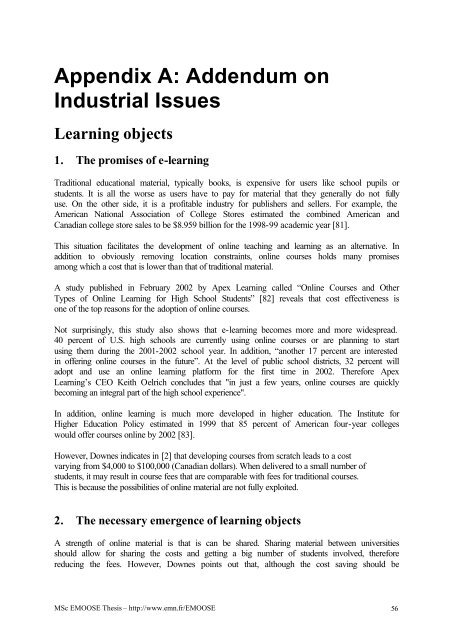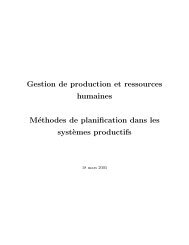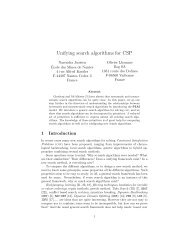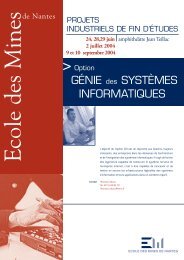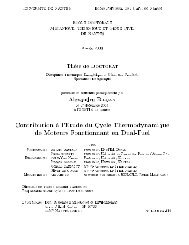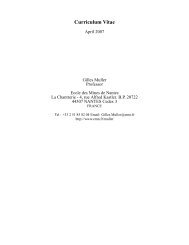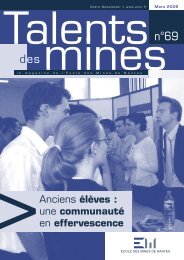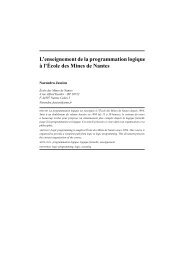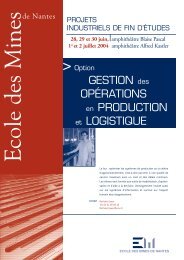pdf - 395 K - Ecole des mines de Nantes
pdf - 395 K - Ecole des mines de Nantes
pdf - 395 K - Ecole des mines de Nantes
You also want an ePaper? Increase the reach of your titles
YUMPU automatically turns print PDFs into web optimized ePapers that Google loves.
Appendix A: Ad<strong>de</strong>ndum onIndustrial IssuesLearning objects1. The promises of e-learningTraditional educational material, typically books, is expensive for users like school pupils orstu<strong>de</strong>nts. It is all the worse as users have to pay for material that they generally do not fullyuse. On the other si<strong>de</strong>, it is a profitable industry for publishers and sellers. For example, theAmerican National Association of College Stores estimated the combined American andCanadian college store sales to be $8.959 billion for the 1998-99 aca<strong>de</strong>mic year [81].This situation facilitates the <strong>de</strong>velopment of online teaching and learning as an alternative. Inaddition to obviously removing location constraints, online courses holds many promisesamong which a cost that is lower than that of traditional material.A study published in February 2002 by Apex Learning called “Online Courses and OtherTypes of Online Learning for High School Stu<strong>de</strong>nts” [82] reveals that cost effectiveness isone of the top reasons for the adoption of online courses.Not surprisingly, this study also shows that e-learning becomes more and more wi<strong><strong>de</strong>s</strong>pread.40 percent of U.S. high schools are currently using online courses or are planning to startusing them during the 2001-2002 school year. In addition, “another 17 percent are interestedin offering online courses in the future”. At the level of public school districts, 32 percent willadopt and use an online learning platform for the first time in 2002. Therefore ApexLearning’s CEO Keith Oelrich conclu<strong><strong>de</strong>s</strong> that "in just a few years, online courses are quicklybecoming an integral part of the high school experience".In addition, online learning is much more <strong>de</strong>veloped in higher education. The Institute forHigher Education Policy estimated in 1999 that 85 percent of American four-year collegeswould offer courses online by 2002 [83].However, Downes indicates in [2] that <strong>de</strong>veloping courses from scratch leads to a costvarying from $4,000 to $100,000 (Canadian dollars). When <strong>de</strong>livered to a small number ofstu<strong>de</strong>nts, it may result in course fees that are comparable with fees for traditional courses.This is because the possibilities of online material are not fully exploited.2. The necessary emergence of learning objectsA strength of online material is that is can be shared. Sharing material between universitiesshould allow for sharing the costs and getting a big number of stu<strong>de</strong>nts involved, thereforereducing the fees. However, Downes points out that, although the cost saving should beMSc EMOOSE Thesis – http://www.emn.fr/EMOOSE 56


